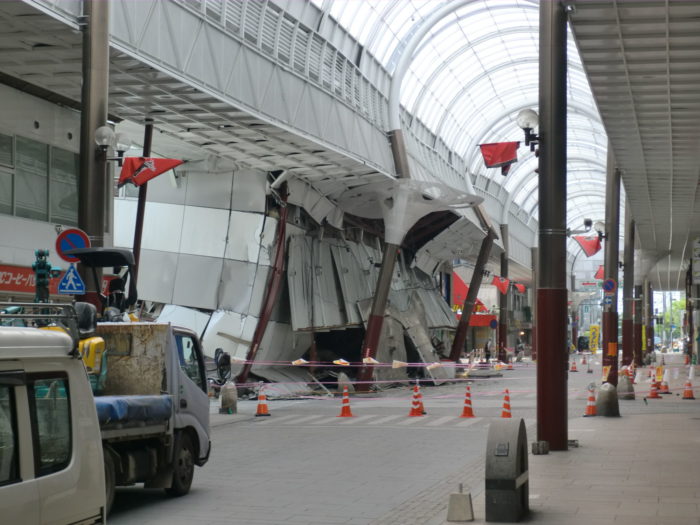Thanks to work done by researchers at Western University, predicting the intensity of aftershocks just got a bit easier.

Scientists there have developed a new way to forecast the magnitude of an earthquake within a series of seismic events.
The study stems from the 2016 Kumamoto, Japan, earthquake that 6.5 magnitude earthquake filled by 7.3 magnitude earthquake two days later.
At least 50 people were killed and 3,000 injured in the Kumamoto earthquake.
With this new research, seismologists will be able to forecast the largest expected earthquake within a series so people are better able to prepare and reduce hazards, damage and loss of life by knowing when an area is safe to return to.
![Schematic illustration of an earthquake sequence in time. The star symbols indicate individual earthquakes with the symbol sizes proportional to earthquake magnitudes. The earthquake times and magnitudes, S = {(ti, mi)}:i = 1, …, are used to sample the model parameters during the training time interval [T0, Te] (with dark cyan color indicating significant events). Darker symbol colors separate the events in the training time interval from the events in the forecasting time interval (lighter symbol colors). The probabilities to have strong earthquakes are estimated during the forecasting time interval [Te, Te + ΔT] (the symbol with light cyan color indicates the largest expected earthquake)](https://globalnews.ca/wp-content/uploads/2019/09/screen-shot-2019-09-06-at-12.57.47-pm-2.png)
“Predicting earthquakes means providing a narrow range of times and locations where large earthquakes are going to occur which is rather unrealistic at the moment.”
He said the method is similar to how meteorologists predict the weather with a 50 per cent probability of rain or snow; their method is trying to forecast the probabilities of sizes and aftershocks for earthquakes.
There are currently ways to forecast aftershocks but Shcherbakov said the difference is their method is more accurate also allows them forecasts the possible size.
WATCH (July 6, 2019): Southern California shaken by 7.1-magnitude earthquake

This new statical approach is a collaborative project between the Western, the Institute of Statical mathematics in Japan, and the University of Potsdam in Germany.
The findings, titled, Forecasting the magnitude of the largest expected earthquake, were published today in the high impact journal Nature Communications.
“The probabilities for large earthquakes proved rather low but it is still very important to have such estimates,” said Shcherbakov.




Comments